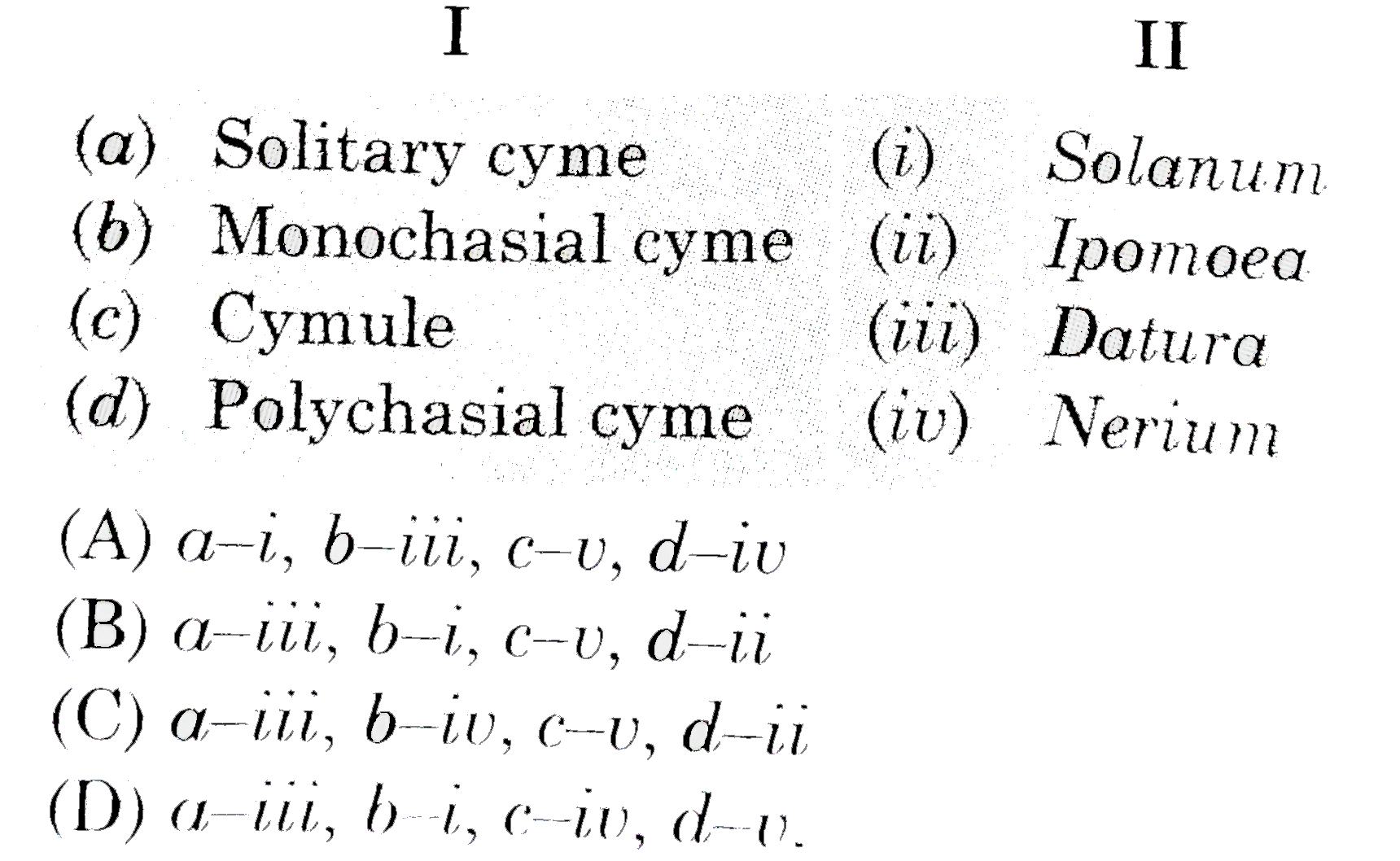Match the correct option of deficiency symptoms.
(a) Cu - exanthema
(b) Mg - interveinal chlorosis and upward curling of leaves
(c) Zn - malformation of leaves and fruits
(d) All of the above
The correct Answer is:4
Step-by-Step Solution:
1. Identify the Nutrient Deficiencies:
- The question requires us to match deficiency symptoms with the correct nutrient (Copper, Magnesium, Zinc).
2. Copper Deficiency Symptoms:
- Copper is an immobile nutrient, meaning its deficiency first appears in new leaves.
- Symptoms include:
- Chlorosis: Yellowing of leaves due to insufficient chlorophyll.
- Enzyme thema: This leads to the production of harmful gum on the bark and affects root bearing capacity.
- Wilting: Leaves shed off prematurely.
- Conclusion: Copper deficiency causes chlorosis, enzyme thema, and wilting.
3. Magnesium Deficiency Symptoms:
- Magnesium is a mobile nutrient, so its deficiency first appears in older leaves.
- Symptoms include:
- Intervenial chlorosis: Yellowing between the veins of leaves.
- Wilting: Leaves may appear limp.
- Stunted growth: Overall growth of the plant is affected.
- Upward curling of leaves: Leaves curl upwards as a sign of deficiency.
- Conclusion: Magnesium deficiency causes intervenial chlorosis and upward curling of leaves.
4. Zinc Deficiency Symptoms:
- Zinc is a micronutrient and its deficiency can lead to:
- Stunted growth: Reduced growth of the plant.
- Malformation of leaves and fruits: Leaves and fruits may develop abnormally.
- It affects the basic metabolism of plants.
- Conclusion: Zinc deficiency causes stunted growth and malformation of leaves and fruits.
5. Final Conclusion:
- All three nutrients (Copper, Magnesium, and Zinc) have specific deficiency symptoms.
- Therefore, the correct option that encompasses all these symptoms is D: All of the above.
- The question requires us to match deficiency symptoms with the correct nutrient (Copper, Magnesium, Zinc).
- Copper is an immobile nutrient, meaning its deficiency first appears in new leaves.
- Symptoms include:
- Chlorosis: Yellowing of leaves due to insufficient chlorophyll.
- Enzyme thema: This leads to the production of harmful gum on the bark and affects root bearing capacity.
- Wilting: Leaves shed off prematurely.
- Conclusion: Copper deficiency causes chlorosis, enzyme thema, and wilting.
- Magnesium is a mobile nutrient, so its deficiency first appears in older leaves.
- Symptoms include:
- Intervenial chlorosis: Yellowing between the veins of leaves.
- Wilting: Leaves may appear limp.
- Stunted growth: Overall growth of the plant is affected.
- Upward curling of leaves: Leaves curl upwards as a sign of deficiency.
- Conclusion: Magnesium deficiency causes intervenial chlorosis and upward curling of leaves.
- Zinc is a micronutrient and its deficiency can lead to:
- Stunted growth: Reduced growth of the plant.
- Malformation of leaves and fruits: Leaves and fruits may develop abnormally.
- It affects the basic metabolism of plants.
- Conclusion: Zinc deficiency causes stunted growth and malformation of leaves and fruits.
- All three nutrients (Copper, Magnesium, and Zinc) have specific deficiency symptoms.
- Therefore, the correct option that encompasses all these symptoms is D: All of the above.
Topper's Solved these Questions
Similar Questions
Knowledge Check
Which of the following is not a deficiency symptoms of minerals?
AInternode shorteningBNecrosisCChlrosisDEtiolation
Match the correct option from A and B.
View SolutionMatch and find the correct option

View SolutionMatch and find the correct option

View SolutionMatch and find the correct option

View SolutionMatch and find the correct option

View Solutionmatch and find the correct option

View SolutionLittle leaf is deficiency symptom of
View Solution

